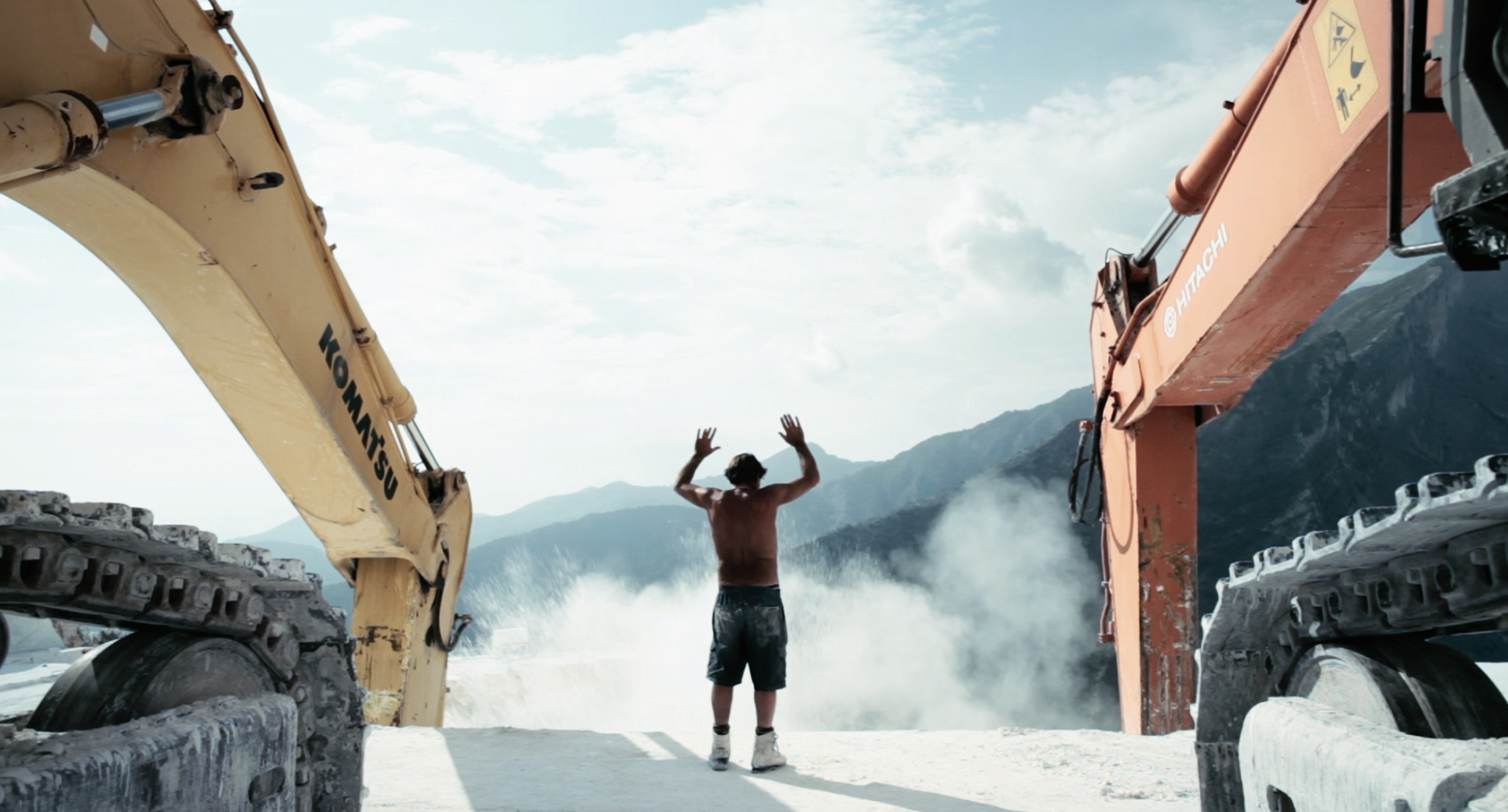In a retrospective at Kunstverein Hannover, the artist’s moving-image feature films all articulately reveal an unvarnished reality
Yuri Ancarani is known for feature-length and mostly dialogue-free art films, so a retrospective collecting nine of his moving-image works – plus photographs – might daunt. Fortunately, here the Italian artist has edited his films to between two and 25 minutes long. (There was, for the dedicated, a tier of full-length screenings in the institution’s cinema.) And if there’s always an unseen portion of these works, that neatly counterpoints Ancarani’s penchant for illuminating our world’s shadow side: he chooses subjects that most people, for better or worse, don’t get to witness in real life, but that speak articulately about our species.
The opener, Il Capo (2010), for example, observes the chief of a marble-quarrying squad in Carrara as he directs, with a conductor’s precision, two digger trucks, as their drivers shear off a huge block of the fabled Italian stone. Several of Ancarani’s diagnostic concerns are capsuled here, under the sign of extraction: work itself as a component of control societies; and human dominance, via tools and tech, over the natural world. Yet our stewardship of the planet is fragile and limited, obviously, and our contemporary hubris great. Ancarani frequently suggests as much with a visual economy that can border on bluntness. Ugarit (2007) features deer running freely in front of a power station, indifferent to progress, industrial or otherwise, and though the film appears to be shot in Europe, its title refers to a Bronze Age port city in Syria where the first alphabet is thought to have been invented, and whose ruins were not excavated until a century ago.

Not infrequently, Ancarani comes across as an anthropologist who finds humans somewhat ridiculous and self-hobbling, if intermittently inventively so. Wedding (2016) drops us into a marriage ceremony in Qatar – where same- sex relations are illegal – focusing only on the turbaned male sheikhs, who nevertheless ceremonially kiss each other repeatedly while female guests are quartered elsewhere. San Giorgio (2019) observes the middle-aged bureaucrats who deal with a Swiss bank vault’s gold. The show’s emotional gut punch, though, comes with the closer, San Vittore (2018), where we ‘see’ inside the eponymous, notoriously tough Italian prison mostly through art-therapy drawings made by inmates’ children: castellated architecture, guards, the occasional screaming, disciplined-and-punished detainee. By that point, it might become doubly clear why Ancarani’s films work best either singly or as edits: there’s only so much unvarnished reality one can take.
Works 2002–2022 at Kunstverein Hannover, 5 November – 8 January
